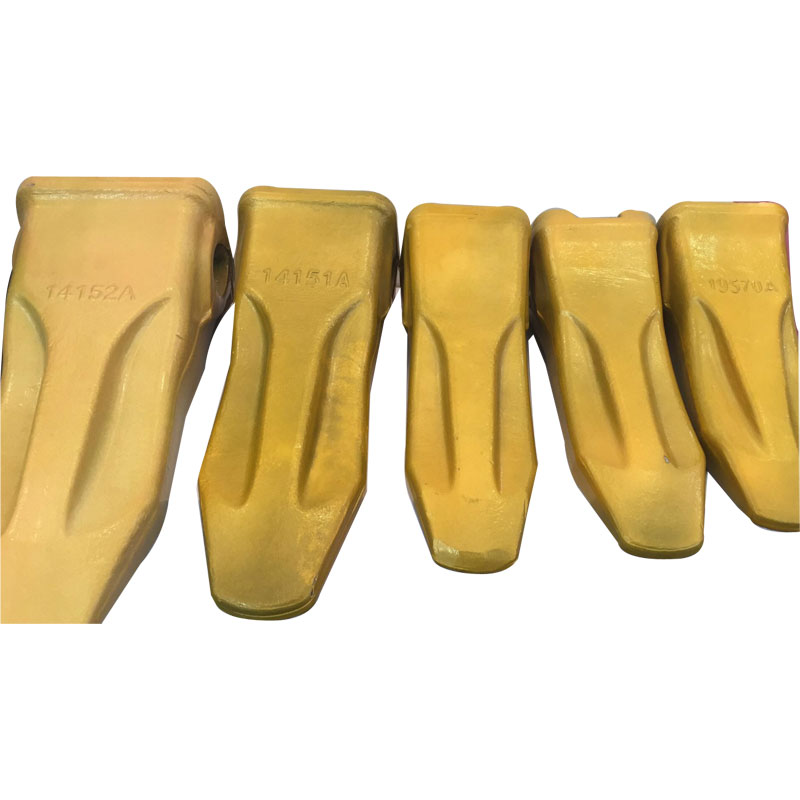What are the characteristics of the structure of ferritic stainless steel forgings?
2022-08-07
Ferritic stainless steel forgings contain 16%~30% chromium and trace carbon, and the matrix structure is ferritic. For example, Cr17 and Cr25Ti.
The first point is that the microstructure of this type of steel is a single ferrite at either high temperature or room temperature and does not undergo structural transformation, that is, it is impossible to use heat treatment to refine the grain and improve the mechanical properties of this type of steel.
Second point: the recrystallization temperature of ferritic steel is lower and faster than that of austenitic steel, and the grain is easy to coarser. At about 600℃ when the grain began to grow, the higher the temperature, the more violent the grain growth, promote the steel's plasticity and toughness to reduce, corrosion resistance is also reduced.
Third point: ferrite stainless steel forgings under normal circumstances corrosion resistance is better, but the process performance is poor, and should not be in cold deformation.
The forging process characteristics of ferritic stainless steel are as follows.
1. In order to prevent coarse grain, the heating temperature of this kind of steel should not be too high and the holding time should not be long. Generally, the initial forging temperature is 1040~1120℃. In order to shorten the residence time of the billet at high temperature, it should be slowly heated to 760 ° C and then rapidly heated to the initial forging temperature.
2, forging ferrite stainless steel forgings grain boundary brittle phase more than a certain amount, will reduce the corrosion performance, creep performance and impact toughness. Therefore, 1150~1180℃ is generally selected. The ingot is less sensitive to overheating than the billet, so the heating temperature can be slightly higher and the heating time can be slightly longer to facilitate the infiltration of carbide into the grain. The final heat should be heated at a lower temperature to avoid grain growth.
3. Poor thermal conductivity in the low temperature area requires slow heating, and it should be rapidly heated when it reaches the high temperature area.
The first point is that the microstructure of this type of steel is a single ferrite at either high temperature or room temperature and does not undergo structural transformation, that is, it is impossible to use heat treatment to refine the grain and improve the mechanical properties of this type of steel.
Second point: the recrystallization temperature of ferritic steel is lower and faster than that of austenitic steel, and the grain is easy to coarser. At about 600℃ when the grain began to grow, the higher the temperature, the more violent the grain growth, promote the steel's plasticity and toughness to reduce, corrosion resistance is also reduced.
Third point: ferrite stainless steel forgings under normal circumstances corrosion resistance is better, but the process performance is poor, and should not be in cold deformation.
The forging process characteristics of ferritic stainless steel are as follows.
1. In order to prevent coarse grain, the heating temperature of this kind of steel should not be too high and the holding time should not be long. Generally, the initial forging temperature is 1040~1120℃. In order to shorten the residence time of the billet at high temperature, it should be slowly heated to 760 ° C and then rapidly heated to the initial forging temperature.
2, forging ferrite stainless steel forgings grain boundary brittle phase more than a certain amount, will reduce the corrosion performance, creep performance and impact toughness. Therefore, 1150~1180℃ is generally selected. The ingot is less sensitive to overheating than the billet, so the heating temperature can be slightly higher and the heating time can be slightly longer to facilitate the infiltration of carbide into the grain. The final heat should be heated at a lower temperature to avoid grain growth.
3. Poor thermal conductivity in the low temperature area requires slow heating, and it should be rapidly heated when it reaches the high temperature area.
4. The final forging temperature should not be too low. When the deformation resistance is too low, the deformation resistance increases rapidly. At the same time, the α phase is often precipitated between 700 and 900℃ due to slow cooling. Therefore, the final forging temperature is usually 850~900℃.

Previous:Heat treatment of large forgings
X
We use cookies to offer you a better browsing experience, analyze site traffic and personalize content. By using this site, you agree to our use of cookies.
Privacy Policy



